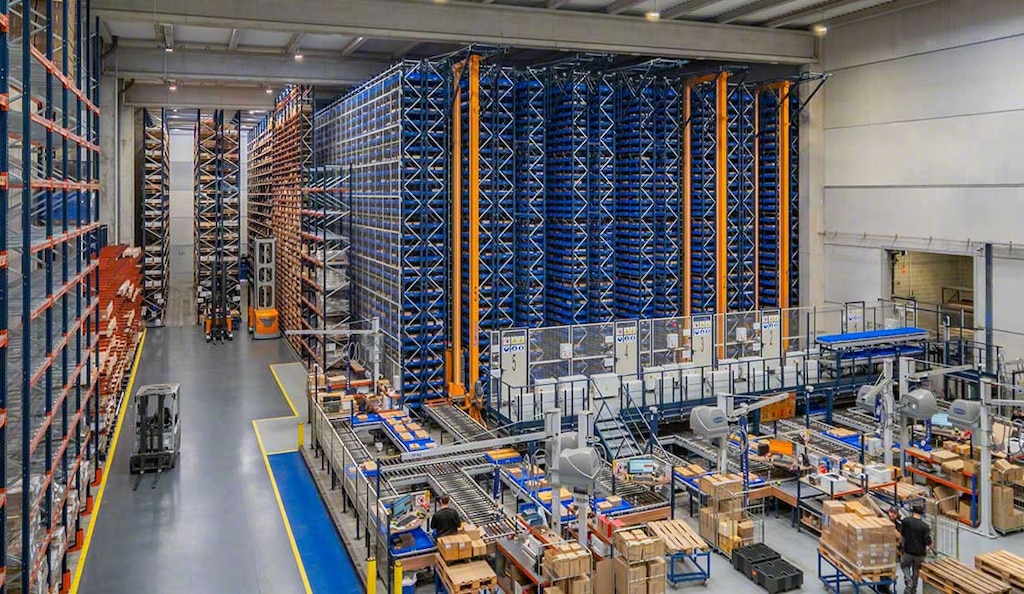
What is an inventory, and how do you keep it up-to-date?
Being familiar with the concept of inventory is essential to ensure that goods are readily available and that projects run smoothly.
What is inventory in a business?
An inventory consists of a detailed list of a company’s goods. It’s indispensable for managing products and assets. This record can include everything from raw materials used in manufacturing and semi-finished goods to final products ready for distribution.
The verb “to inventory” refers to the act of taking stock. It means to create an orderly, accurate list of items belonging to a person, organization, or community. It can also relate to goods located in a specific place. In domestic environments and small-scale warehouses, it’s possible to track these assets manually through lists or records. Medium to large companies, on the other hand, require a warehouse management system like Easy WMS to handle this task efficiently. Business leaders pay careful attention to inventory management to guarantee they have enough stock to carry out their operations effectively.
What is the purpose of inventory?
Keeping an organization’s inventory up-to-date provides valuable insights that inform decision-making and strategy development. Here are some key reasons for conducting inventories:
-
Track activities. An updated inventory acts as an asset database. It stores relevant details such as product names, descriptions, values, locations, and SKU numbers.
-
Control stock. Thorough, automated inventory management enables companies to monitor entry and exit dates as well as the status of all goods. This helps prevent issues like stockouts.
-
Reduce costs. Having detailed information on stock levels makes it easier to identify issues such as inventory shrinkage caused by administrative errors, inefficient receiving, damages, or theft.
-
Reflect business output. Inventory provides a snapshot of what a company has produced and sold, offering insight into its performance and market reception. It highlights which products are in high demand as well as those that have been idle for too long.
-
Enhance customer satisfaction. Knowing exactly which items are in stock and in what quantities allows for quicker order fulfillment and thus positive customer experiences.
-
Predict future demand. Implementing an effective resource management system aids in anticipating market needs, especially during seasonal demand forecasting.

What is the importance of inventory in business accounting?
Beyond streamlining daily operations, maintaining a warehouse inventory offers numerous benefits that can make the difference between a thriving company and one performing below its potential. These records allow organizations to better assess their current assets, balance sheets, and financial reports, maximizing profits without compromising customer satisfaction.
- Asset tracking. Knowing the status of manufactured and received goods helps evaluate the financial health of the business.
- Accounting. Calculating material acquisition, storage, and handling costs provides a clearer understanding of profit margins, enabling companies to fine-tune pricing strategies.
- Regulatory compliance. Being aware of available inventory is critical for meeting tax and legal obligations.
What is an example of inventory?
Generally, an inventory should include the data listed below. However, it can be even more detailed by implementing a warehouse management tool developed by industry experts instead of conducting it manually:
- Item name
- SKU
- Price
- Cost
- Detailed description
- Quantity
- Item condition
- Review date
- Movement time
Examples of inventory in a warehouse include businesses with low levels of stock, inflows, and outflows that can record this information on paper or a computer. Secondly, organizations that operate manual warehouses may deploy a warehouse management system (WMS) to track stock efficiently using labels and RF scanners. Lastly, fully automated facilities leverage robotic solutions in conjunction with the WMS to log all internal, inbound, and outbound movements.

What is inventory turnover?
Warehouse stock turnover refers to the number of times a company has sold or used a product or how often inventory needs to be replenished within a specific time frame, typically a year. To calculate turnover, divide the value of the items sold by the average inventory value.
| Average inventory value = (Starting inventory + Ending inventory) / 2 |
| Inventory turnover = Sales value / Average inventory value |
Control your inventory with Interlake Mecalux
If warehouses and distribution centers are the heart of the supply chain, it’s advantageous to ensure maximum efficiency and maintain a competitive edge. To this end, it could be beneficial to deploy a software solution like Easy WMS. This system automates the areas most frequently used in these facilities while managing inventory, inflows, and outflows.
Are you in need of logistics consulting services to optimize your warehouse? Or perhaps you’re considering building one from the ground up. Either way, be sure to contact us. We provide guidance from the start, accompanying you throughout the project. We tailor our services to match your needs. And once the project is completed, we’ll offer ongoing support to streamline your operations, as we do every day with other satisfied clients.
